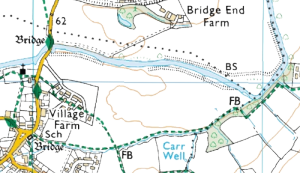Asking About Bridges
From DT Online
Wherever there are roads, footpaths, canals, railways or rivers, for example, there are likely to be bridges to enable one to cross over or under another. You may already be familiar with some bridges near where you live and looking at maps may show you where there are others.
Visit bridges in your area and think about the following questions:
- What does the bridge cross - e.g. road, valley, river, canal, sea?
- What does the bridge carry - e.g. people, freight, cars, trains, boats, aircraft?
- Why do you think it was built in that particular place - e.g. road/rail/canal networks, geology of area, width/height of crossing?
- Was there any other way of crossing there before - e.g. ford, ferry, older bridge?
- What type of bridge is it - e.g. beam, arch, suspension, cantilever, stayed girder or a mixture?
- Is the bridge single span or multi-span and why - e.g. span, foundations, topography, need to allow passage, centre part movable?
- What material(s) are used - e.g. stone, brick, cast iron, steel, concrete, timber, mixture?
- Why do you think these materials were chosen - e.g. type and size of bridge, cost, availability?
- How are the bridge parts joined - e.g. cement, bolt, rivet, weld, screw, pegged joints?
- Is there any sign of weathering or decay - e.g. rust, moss, cracks?
- Have the materials been protected in any way - e.g. painted, coated, treated against rot?
- Are there any identification markings on the bridge - e.g bridge number, maker's name and company, safe working load?
Safety Point! Bridges can be dangerous places. Go with a friend, keep to recognised footpaths and never climb over or through fences to get a better view. Young children should always ask permission of an adult and may need to be accompanied by them..
